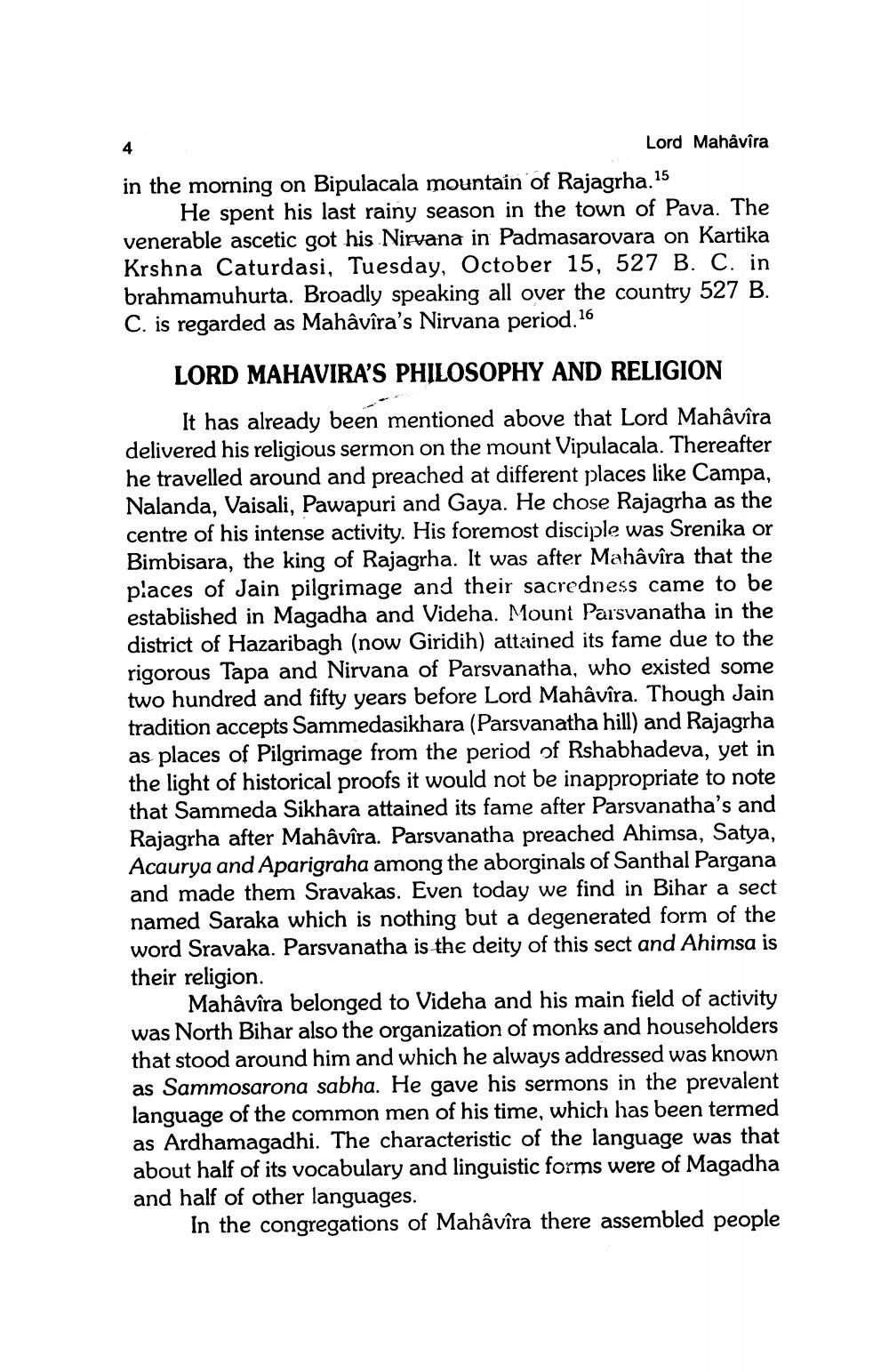________________
Lord Mahâvîra
4
in the morning on Bipulacala mountain of Rajagrha.15
He spent his last rainy season in the town of Pava. The venerable ascetic got his Nirvana in Padmasarovara on Kartika Krshna Caturdasi, Tuesday, October 15, 527 B. C. in brahmamuhurta. Broadly speaking all over the country 527 B. C. is regarded as Mahâvîra's Nirvana period. 16
LORD MAHAVIRA'S PHILOSOPHY AND RELIGION
It has already been mentioned above that Lord Mahâvîra delivered his religious sermon on the mount Vipulacala. Thereafter he travelled around and preached at different places like Campa, Nalanda, Vaisali, Pawapuri and Gaya. He chose Rajagrha as the centre of his intense activity. His foremost disciple was Srenika or Bimbisara, the king of Rajagrha. It was after Mahâvîra that the places of Jain pilgrimage and their sacredness came to be established in Magadha and Videha. Mount Parsvanatha in the district of Hazaribagh (now Giridih) attained its fame due to the rigorous Tapa and Nirvana of Parsvanatha, who existed some two hundred and fifty years before Lord Mahâvîra. Though Jain tradition accepts Sammedasikhara (Parsvanatha hill) and Rajagrha as places of Pilgrimage from the period of Rshabhadeva, yet in the light of historical proofs it would not be inappropriate to note that Sammeda Sikhara attained its fame after Parsvanatha's and Rajagrha after Mahâvîra. Parsvanatha preached Ahimsa, Satya, Acaurya and Aparigraha among the aborginals of Santhal Pargana and made them Sravakas. Even today we find in Bihar a sect named Saraka which is nothing but a degenerated form of the word Sravaka. Parsvanatha is the deity of this sect and Ahimsa is their religion.
Mahâvîra belonged to Videha and his main field of activity was North Bihar also the organization of monks and householders that stood around him and which he always addressed was known as Sammosarona sabha. He gave his sermons in the prevalent language of the common men of his time, which has been termed as Ardhamagadhi. The characteristic of the language was that about half of its vocabulary and linguistic forms were of Magadha and half of other languages.
In the congregations of Mahâvîra there assembled people




